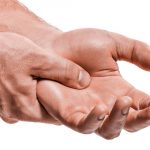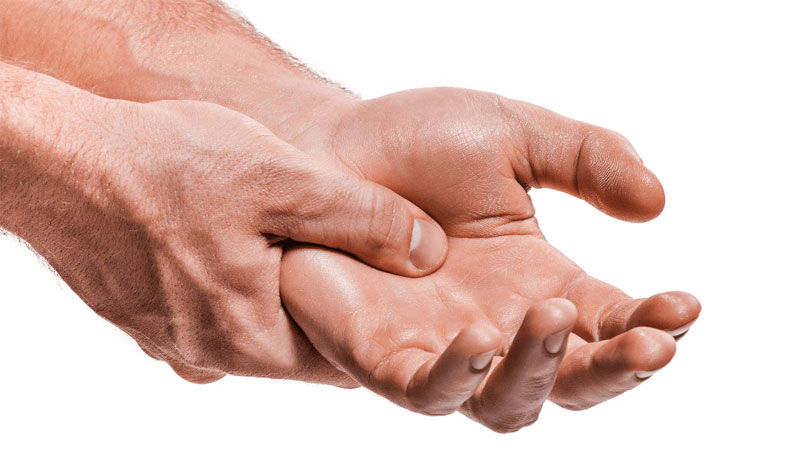 An overuse injury of the wrist in which the median nerve is compressed by the inflamed flexor tendons (all of which pass through the carpal tunnel), leading to numbness and muscle weakness in the hand.
An overuse injury of the wrist in which the median nerve is compressed by the inflamed flexor tendons (all of which pass through the carpal tunnel), leading to numbness and muscle weakness in the hand.
Inflamed tendons and membranes in the wrist and damaged nerves that control finger and hand movement.
A condition, usually affecting women, in which the fingers tingle and hurt at night. It is caused by compression of the median nerve.
Carpal tunnel syndrome (CTS) is a type of cumulative trauma disorder in the sense that it develops after protracted repetitive mechanical stress on musculoskeletal systems. Musculoskeletal system disorders can subdivided into three classifications, namely nerve, neurovascular, and tendon disorders. CTS is considered a nerve compression disorder. Specifically, it is the resultant neuropathy associated with restriction of the median nerve passing through the carpal tunnel. Nerve compression disorders usually result in reduction or complete loss of motor, particularly fine motor skills, sensory, and sensory perception. In severe cases, complete autonomic nerve function is lost.
Common disorder of the wrist and hand, caused by compression of the median nerve in the wrist area and manifested by pain, tingling, burning, and muscular weakness, sometimes spreading to the arm and shoulder. It is more common in women, especially during pregnancy and menopause, but may also occur in both sexes as a result of trauma, rheumatoid arthritis, diabetes mellitus, or other disorder. Treatment involves pain relief (sometimes by the use of corticosteroids), the splinting and support of the wrist (especially at night), and surgery if the condition persists.
Compression of the median nerve of the hand by connective tissue that causes pain, numbness, and loss of strength of the hand.
Compression of the median nerve located between the tendons and a ligament of the wrist, causing pain, weakness, and burning or tingling sensations in the hand and fingers.
Compression of the median nerve that causes numbness, tingling, weakness, or pain in the wrist or hand, particularly the thumb and index, middle, and part of the fourth fingers. These sensations are often more pronounced at night and may cause wakening. As the disease progresses, there may be burning, cramping, and weak¬ ness of the hand. Decreased hand grip can cause dropping of objects. Sometimes shooting pains are experienced in the forearm. Chronic carpal tunnel syndrome can eventually lead to wasting or atrophy of hand muscles.
A condition characterised by attacks of pain and tingling in the first three or four fingers of one or both hands. The attacks usually occur at night. Carpal tunnel syndrome is caused by pressure on the median nerve as it passes under the strong ligament that lies across the front of the wrist. The condition may respond to use of a night splint on the hand; otherwise a cortico steroid injection under the ligament may help. If not, pressure is relieved by surgical division of the compressing ligament.
Pain or numbness and tingling that affect some part of the median nerve distribution of the hand (the palmar side of the thumb, the index finger, the radial half of the ring finger, and the radial half of the palm) and may radiate into the arm. Patients may have a history of cumulative trauma to the wrist, e.g., as a result of overuse in carpentry, rowing, typing, computing, or the operation of vibrating tools or machinery. In addition, the condition may occur after wrist fracture, in pregnancy, or as a consequence of systemic or metabolic disorders such as diabetes mellitus, hypothyroidism, acromegaly, and amyloidosis.
The wrist comprises a structure formed by the bones and ligaments that gives rise to a canal known as the carpal tunnel. This tunnel serves as a pathway through which the median nerve traverses.
